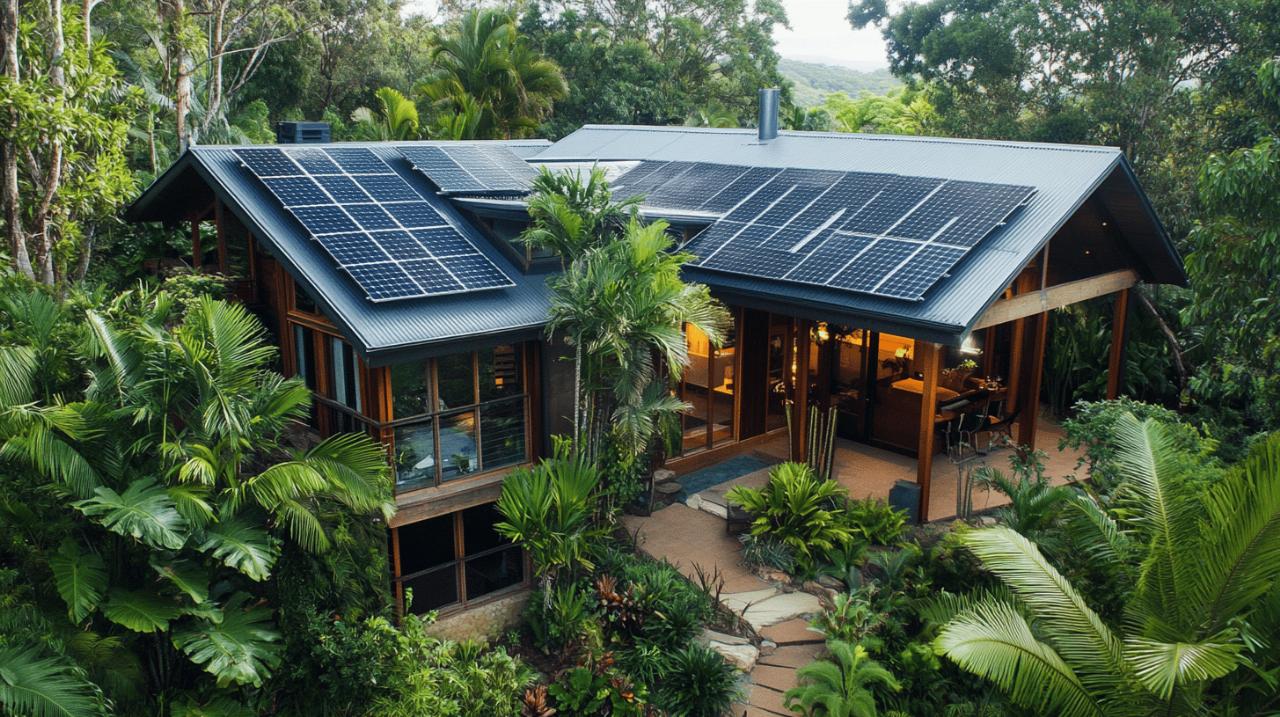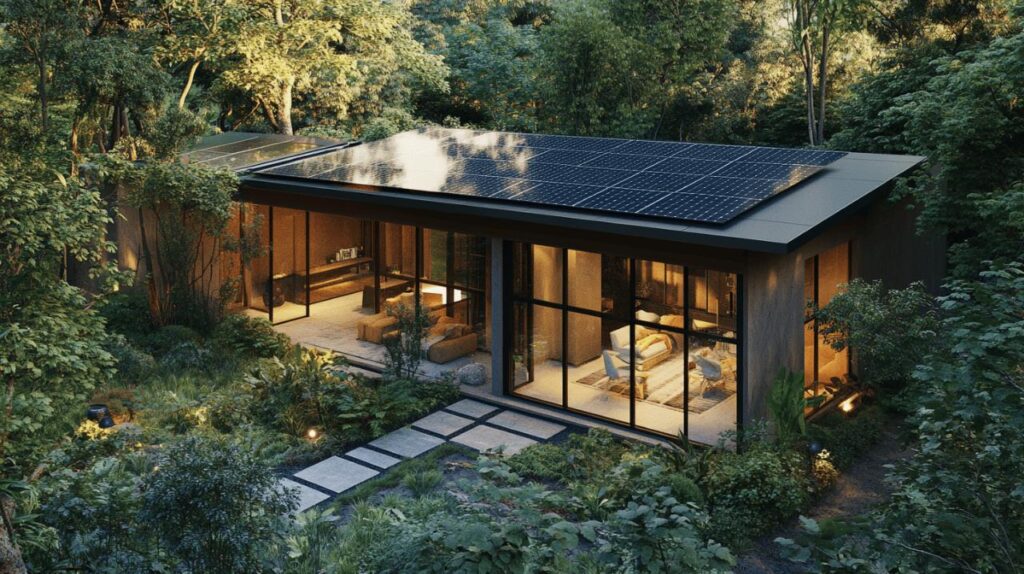Energy efficiency has become a crucial factor in home improvement projects, not just for environmental reasons but also for significant cost savings on utility bills. As energy prices continue to rise across the UK, implementing energy-efficient solutions in your home has never been more important. This article explores practical approaches to enhance your home's energy performance while potentially increasing its EPC rating.
Insulation upgrades and their impact
Effective insulation is the foundation of any energy-efficient home. It creates a thermal envelope that keeps warmth inside during winter and outside during summer. Many homeowners visit kamerolli.it for inspiration on combining aesthetic design with practical insulation solutions that work throughout the seasons. The return on investment for insulation upgrades is impressive, with potential savings that accumulate year after year.
Types of insulation materials and their effectiveness
Modern insulation comes in various forms, each suited to different areas of your home. Fibreglass and mineral wool are common choices for loft spaces, while foam boards work well for walls. Spray foam insulation offers excellent coverage for irregular spaces and can reach areas that other materials cannot. The effectiveness of each material is measured by its R-value, which indicates thermal resistance—higher values translate to better insulation properties.
Key areas to prioritise for maximum heat retention
Strategic insulation placement maximises energy savings. Topping up loft insulation from 120mm to at least 270mm can save approximately £20 annually in Great Britain and £25 in Northern Ireland. Even more impressive, insulating cavity walls could result in yearly savings of around £240 in GB and £270 in NI. For homes with solid walls, insulation upgrades can yield even greater benefits—up to £330 per year in GB and £370 in NI for a semi-detached property. Hot water cylinders should not be overlooked; adding an insulation jacket costing about £18 and increasing insulation from 25mm to 80mm can save £40 annually in GB and £45 in NI.
Windows and Doors: The Gateway to Energy Efficiency
Windows and doors can be significant sources of heat loss if not properly designed or maintained. Modern glazing technology offers solutions that dramatically reduce energy loss while maintaining aesthetic appeal and allowing natural light to enter your home.
Double and triple glazing options for different budgets
Upgrading from single to double glazing is one of the most effective energy efficiency improvements. Installing A-rated double glazing in a semi-detached, gas-heated property can save approximately £140 per year in GB and £160 in NI. Triple glazing provides even better insulation but comes at a higher initial cost. For those with tighter budgets, secondary glazing offers a middle-ground solution that still significantly improves thermal performance. The Inflation Reduction Act in some regions provides tax credits covering 30% of costs for energy-efficient windows, making these upgrades more affordable.
Draught-proofing techniques for existing fixtures
Professional draught-proofing, with an estimated cost of £250, can save around £85 annually in GB and £95 in NI. This involves sealing gaps around windows and doors with weatherstripping, silicone caulk, or draught excluders. For doors, installing brush strips at the bottom and keyhole covers can eliminate cold air infiltration. Even letterboxes can be fitted with brushes or flaps to prevent draughts. These relatively low-cost measures can make a substantial difference to comfort levels and energy consumption.
Smart appliance choices for lower energy consumption
Household appliances account for a significant portion of domestic energy use. Making informed choices when purchasing or replacing appliances can lead to substantial energy savings over their lifetime.
Understanding energy ratings and what they mean
The energy rating system for appliances provides a clear indication of efficiency, ranging from A (or A+++ for some categories) to G. These ratings take into account energy consumption under standardised conditions. For example, washing machines are rated on energy used per washing cycle, while refrigerators are assessed on their continuous energy consumption. Choosing appliances with higher ratings typically results in lower running costs despite potentially higher purchase prices. Even small electronic devices make a difference—laptops use 85% less electricity than desktop computers, making them a more energy-efficient choice for home office setups.
Cost-benefit analysis of upgrading older appliances
When considering replacing functioning but older appliances, calculate both the upfront cost and potential energy savings. A new A-rated condensing boiler costs approximately £3,900 but can save around £420 per year in GB and £500 in NI compared to older models. Similarly, switching to energy-efficient appliances throughout the home and being mindful of standby power can yield significant savings. Simply turning off appliances on standby instead of leaving them in sleep mode can save approximately £45 annually in GB and £55 in NI—a simple habit change with meaningful results.
Lighting solutions that save power and money
Lighting typically accounts for about 15% of a household's electricity bill. Modern lighting technologies offer ways to maintain or even improve lighting quality while dramatically reducing energy consumption.
LED technology advantages over traditional bulbs
LED bulbs represent a revolutionary advancement in lighting efficiency. Replacing all conventional bulbs with energy-efficient LEDs can reduce carbon dioxide emissions by up to 35kg annually while saving approximately £45 per year in GB and £50 in NI. LEDs use up to 90% less energy than traditional incandescent bulbs and last up to 25 times longer. This means fewer replacements and consistent energy savings throughout their extended lifespan. The quality of light has also improved significantly, with LEDs now available in various colour temperatures to create the desired ambiance in different rooms.
Smart lighting systems for optimised usage
Smart lighting takes efficiency a step further by ensuring lights are only on when needed. These systems allow remote control via smartphone apps, scheduling based on occupancy patterns, and automatic adjustment to natural light levels. Motion sensors in hallways, bathrooms, and outdoor areas ensure lights operate only when someone is present. Dimming capabilities allow for customised lighting levels that save energy when full brightness is unnecessary. The initial investment in smart lighting is recouped through reduced electricity usage and extended bulb life.
Renewable energy options for homes
Incorporating renewable energy sources into your home can dramatically reduce both energy bills and environmental impact. Modern systems are becoming increasingly affordable and efficient, making them practical options for many homeowners.
Solar panel installation considerations and benefits
Solar photovoltaic panels convert sunlight directly into electricity, providing clean energy for your home. With installation costs of approximately £6,100, solar panels can save around £150 per year in GB and £180 in NI while reducing annual carbon dioxide emissions by 750kg. Factors to consider include roof orientation, angle, and shading, as these affect energy generation potential. Most installations require minimal maintenance beyond occasional cleaning. The Feed-in Tariff and Smart Export Guarantee schemes provide additional financial benefits by paying homeowners for the electricity they generate and export to the grid.
Other renewable alternatives worth exploring
Beyond solar power, several other renewable options exist for UK homes. Air source heat pumps can replace conventional gas boilers, reducing annual carbon dioxide emissions by up to 2,300kg in GB and 3,300kg in NI. These systems extract heat from outside air even in cold weather and are particularly efficient when paired with underfloor heating. Ground source heat pumps provide similar benefits by utilizing the constant temperature of the earth. For homes near flowing water, micro-hydro systems can generate consistent electricity. Biomass boilers offer another alternative, burning wood pellets or chips as a renewable heat source.
Air sealing strategies for existing properties
Air leakage can account for up to 40% of heat loss in many homes. Comprehensive air sealing complements insulation by preventing warm air from escaping and cold drafts from entering.
Identifying common leak points throughout the house
Air leaks occur at junctions between different building materials and around openings. Common problem areas include gaps around windows and door frames, electrical outlets on exterior walls, plumbing penetrations, attic hatches, and chimney flashing. Some leaks are obvious and create noticeable drafts, while others are subtle but still contribute to energy loss. Professional energy assessors use thermal imaging cameras and blower door tests to pinpoint leaks that might otherwise go undetected. Addressing these issues can improve comfort while reducing heating and cooling costs by approximately 10%.
DIY versus professional sealing methods
Many air sealing tasks are suitable for DIY enthusiasts. Weatherstripping and caulking around windows and doors, installing foam gaskets behind outlet covers, and adding door sweeps are relatively straightforward projects. For more complex issues like sealing attic penetrations or ductwork, professional services may be more appropriate. The materials needed for DIY air sealing are generally inexpensive, making this one of the most cost-effective energy improvements. Professional air sealing services provide comprehensive solutions with specialized equipment and expertise for challenging situations or when preparing for a formal energy assessment.
Professional energy assessments and their value
A professional energy assessment provides a systematic evaluation of your home's energy performance and identifies the most effective improvements for your specific situation.
What to expect during an energy audit
During a comprehensive energy audit, assessors examine your home's building envelope, heating and cooling systems, and major appliances. They typically perform a blower door test to measure air leakage rates and use infrared cameras to detect thermal anomalies indicating insulation gaps or air leaks. The assessment includes reviewing utility bills to establish current energy usage patterns. Some auditors also conduct safety checks on combustion appliances to ensure they're operating efficiently and venting properly. The process generally takes several hours for a thorough evaluation of all aspects affecting energy performance.
Creating an action plan based on assessment findings
Following the assessment, you'll receive a detailed report highlighting energy-saving opportunities in order of priority and cost-effectiveness. This allows you to develop a strategic implementation plan that fits your budget and goals. The report typically includes estimated costs and potential savings for each recommended improvement. For maximum impact, start with the most cost-effective measures like air sealing and insulation before moving to more expensive upgrades. Many improvements qualify for financial incentives through programmes like the Green Deal scheme, which is available to households with electricity meters in England, Scotland, and Wales. These professional recommendations ensure your energy efficiency investments deliver optimal returns.

